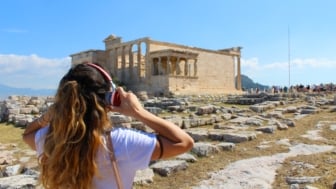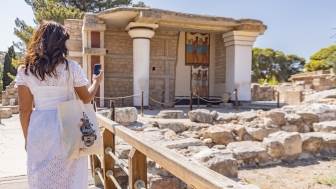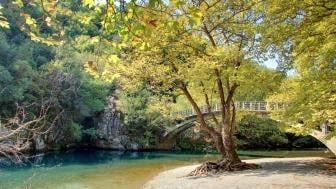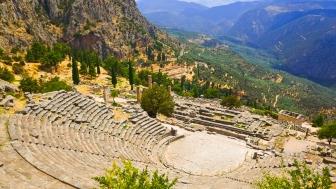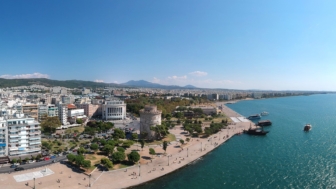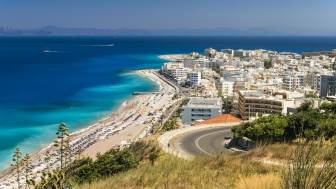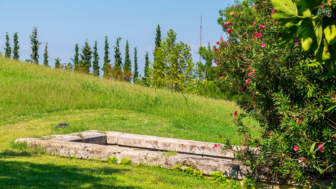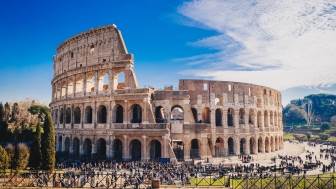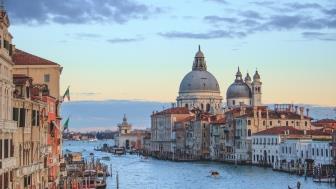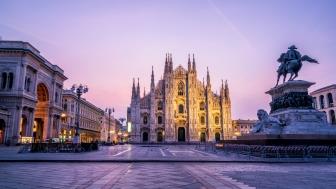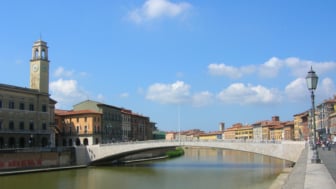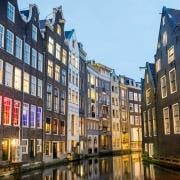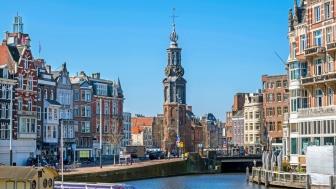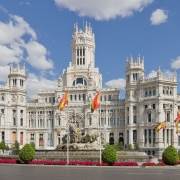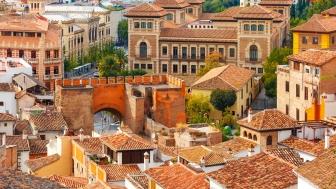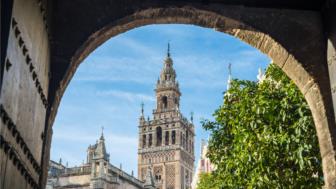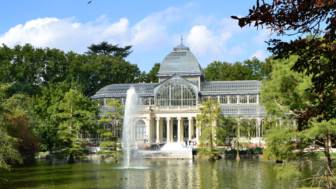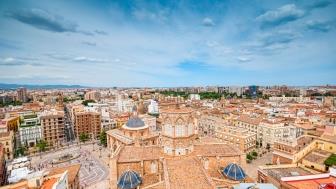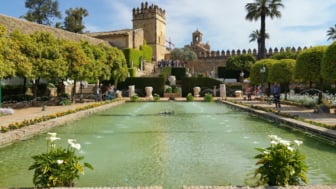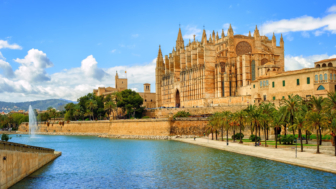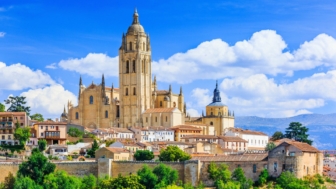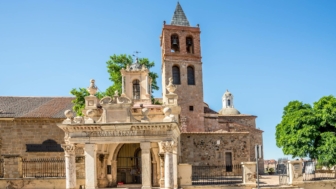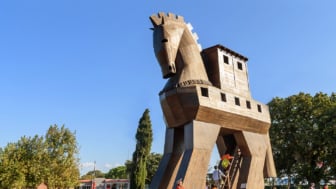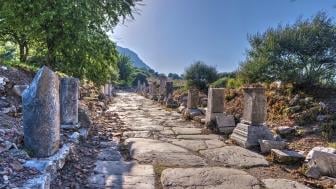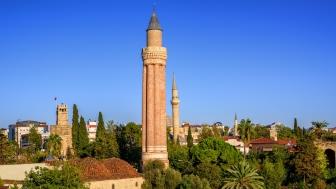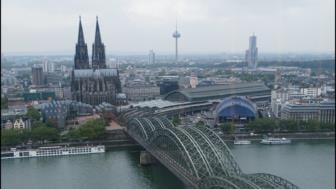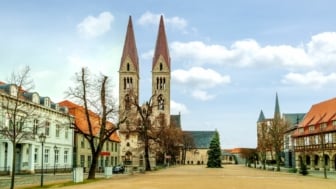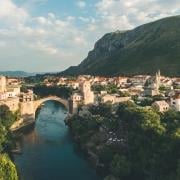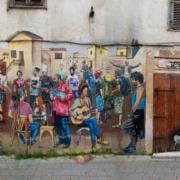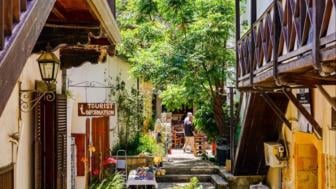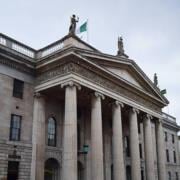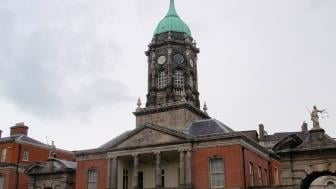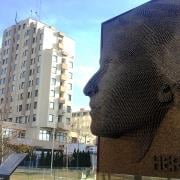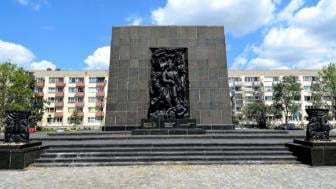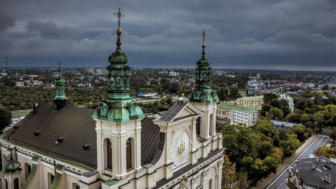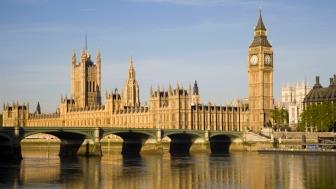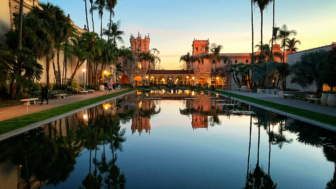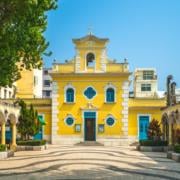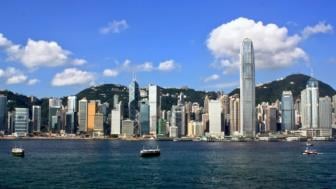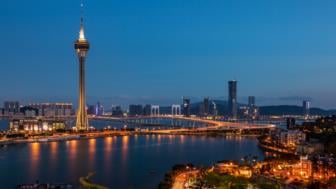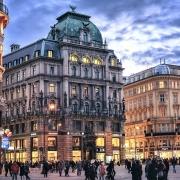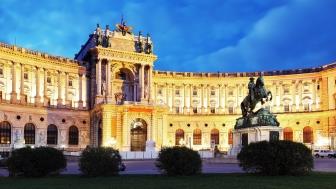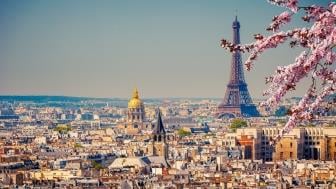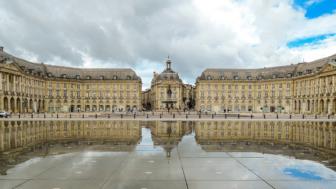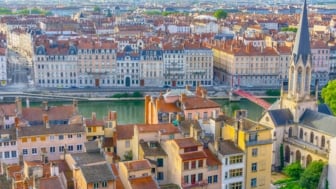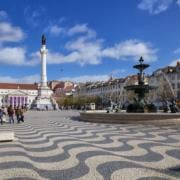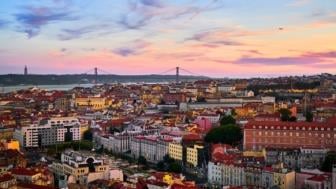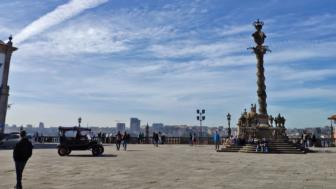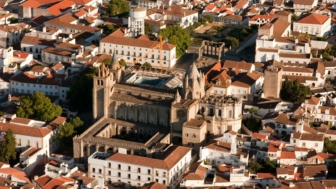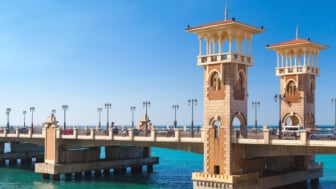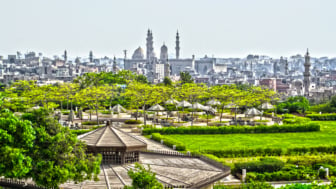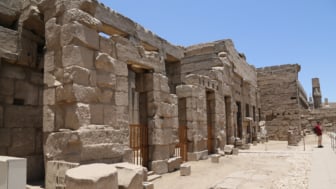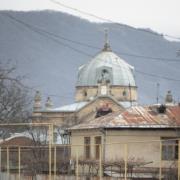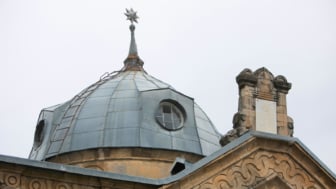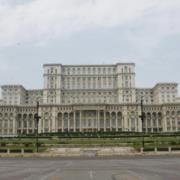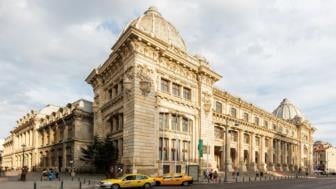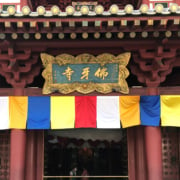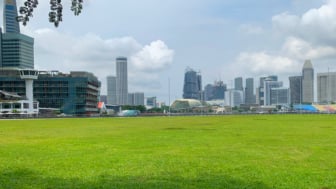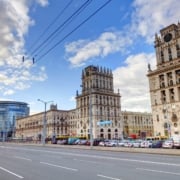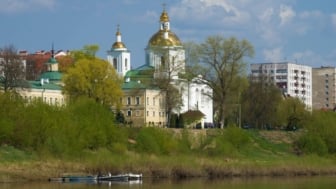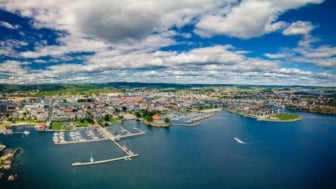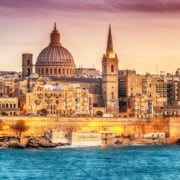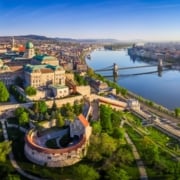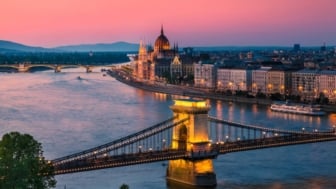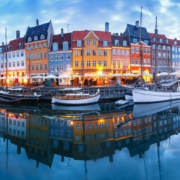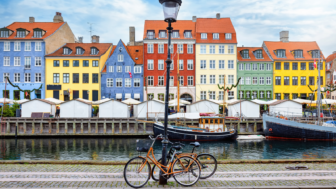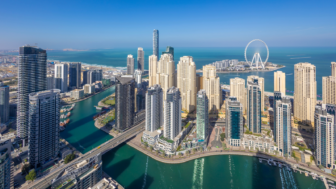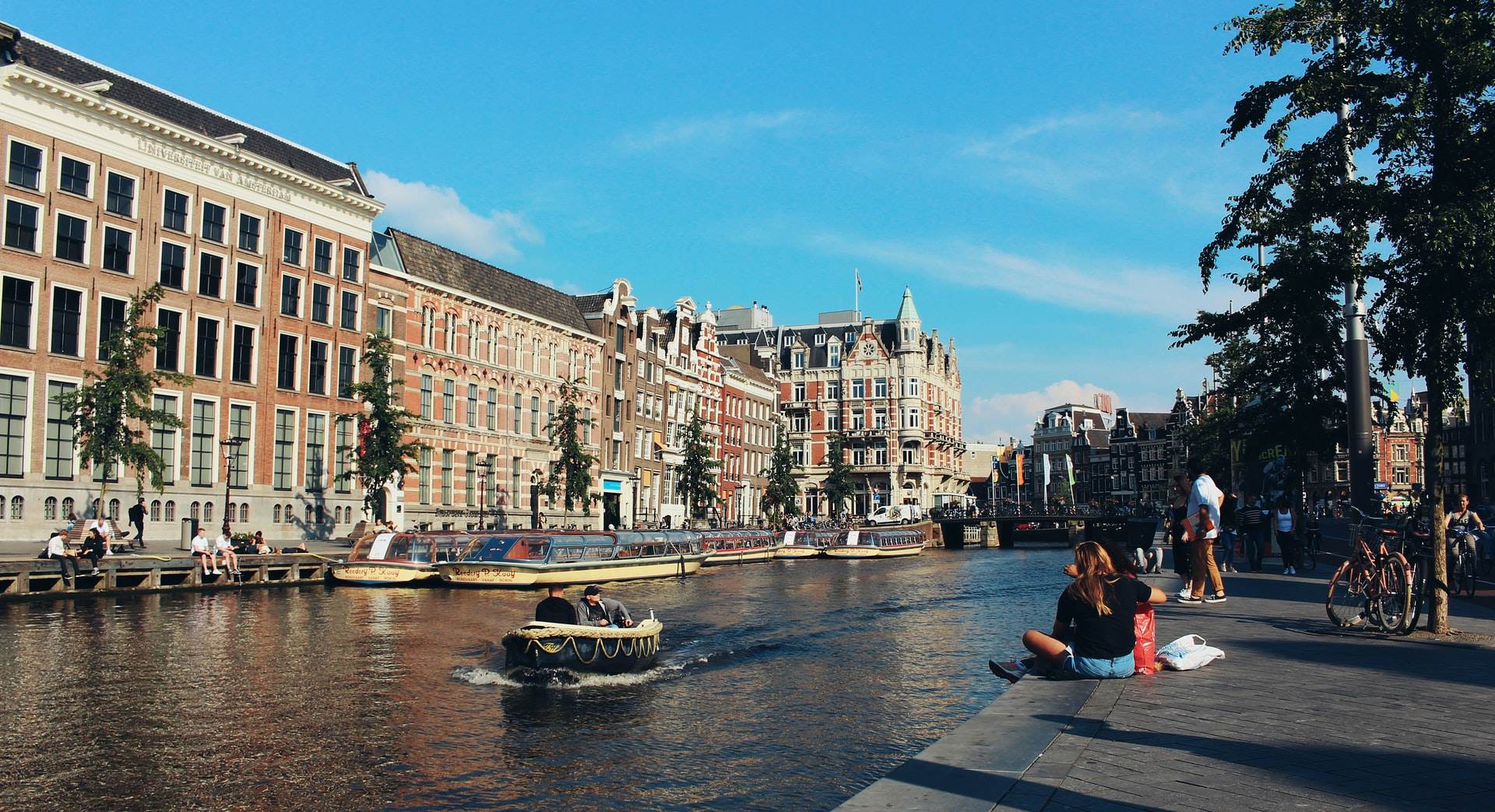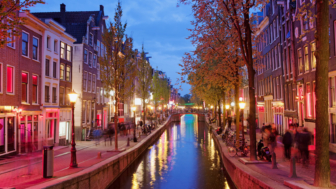Nowadays, Amsterdam is well-known as one of Europe’s top destinations and the ideal city for a short gateway. Have you ever wondered though, how was Amsterdam developed over the centuries and became what we see nowadays? Netherlands’ capital takes visitors on a journey through time and history through its buildings and landmarks and we’re here to guide you to this magnificent city on every step along the way. Here are 7 interesting things about Amsterdam you’ll learn with Clio Muse self-guided audio tours while roaming around the city.
The beginning of Amsterdam
Amsterdam was born around 1100 CE as families settled on the sand dunes along the river IJ. Within the next couple of centuries, the settlement expanded and acquired a small castle and walls to protect the village. Eventually, a dam was built across the river Amstel to connect the east and west side of the city. The dam was built up and became a town square. Two of Amsterdam’s most famous landmarks are located here: the Nieuwe Kerk, which was built in 1408 and is the burial site for many Dutch naval heroes (including Admiral Michiel de Ruyter who sailed up the Thames and captured the flagship of the English fleet in June 1667) and the Town Hall (Royal Palace), which was described as the eighth miracle of the world by the poet Constantijn Huygens.
“The Dam” from the “De Wallen: The Red Light District” self-guided audio tour
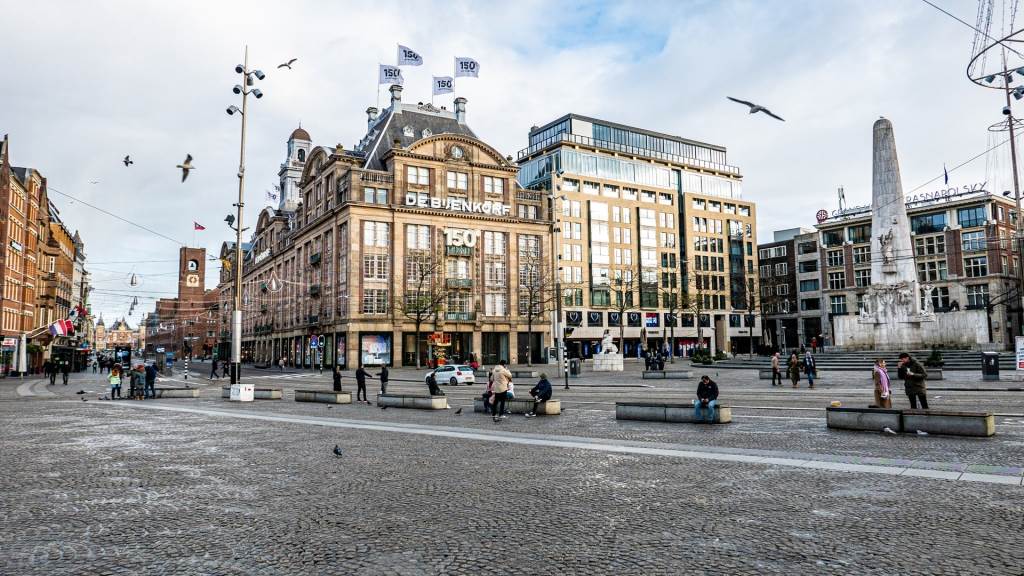
Amsterdam’s emerging labor movement and 19th-century social housing
Amsterdam being a heavily industrialized and densely urbanized city became also a hub in which lots of progressive socialist ideas sparked as a call for solidarity and cooperation among the members of the working class. Initially, workers in the city were housed in shacks at extortionate prices. The houses had no sewage systems, bathrooms or running water. In 1844, Amsterdam clergyman Otto Heldring (1804-1876) preached for a solution in his manifest about poverty. Eight years later he founded the first Dutch housing association: The Society for the Workers’ Class in Amsterdam. The emerging labor movement and socialism also made their mark on nineteenth-century social housing. Workers wanted to build and manage their homes through cooperatives. The Construction Company for the Acquisition of Private Houses in Amsterdam, founded in 1868, is such an initiative and the first sign of Communism in the Netherlands.
“An Amsterdam Success Story” from “The Pipe District: Factories and the Rise of the Working Class” self-guided audio tour
-
Duration: 1h 10min
Rembrandt’s first painting was displayed in Hotel NH Doelen
The building that houses the Hotel NH Doelen today, is where one of the most important of Rembrandt’s paintings was first displayed – The Night Watch. In 1639, Rembrandt was contacted by the Militia Guild and they have commissioned a group portrait from him. n 1639, Rembrandt was contacted by the Militia Guild and they have commissioned a group portrait from him. They wanted to celebrate the opening of the new banquet hall in their guild house, which was located here. Each member of the guild would pay around 100 guilders to be depicted on a painting. Rembrandt received a payment of 1,600 guilders for it. That was an enormous amount of money for that time because, during the 17th Century, an average yearly wage would be between 100 and 400 guilders.
“Hotel NH Doelen” from the “Following the footsteps of Rembrandt in Amsterdam“ self-guided audio tour
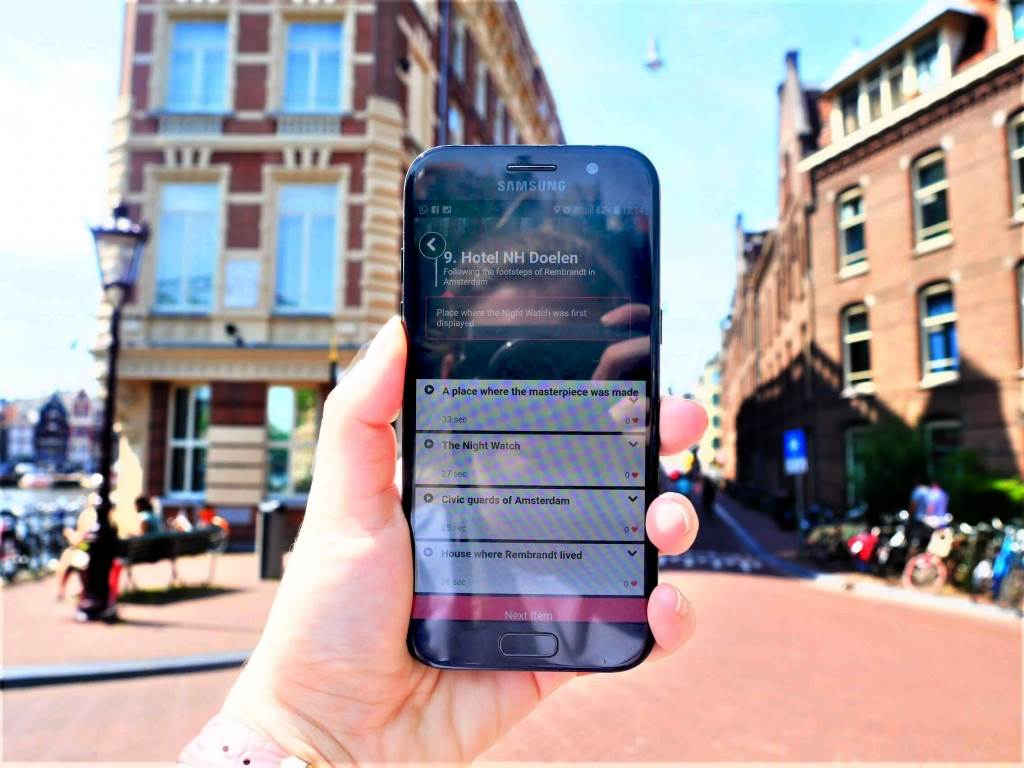
The House with the Gnomes
The House with the Gnomes was completed in 1884-1885 and named after the beautifully decorated facade with allegorical figures which included angels, eagles and two gnomes. The house is characteristic of architect Antonius Cornelis Boerma (1852-1908) and a true patchwork of architectural styles with renaissance elements and a variety of building materials.
“Architectural burlesque” from the “The Pipe District: Factories and the Rise of the Working Class” self-guided audio tour
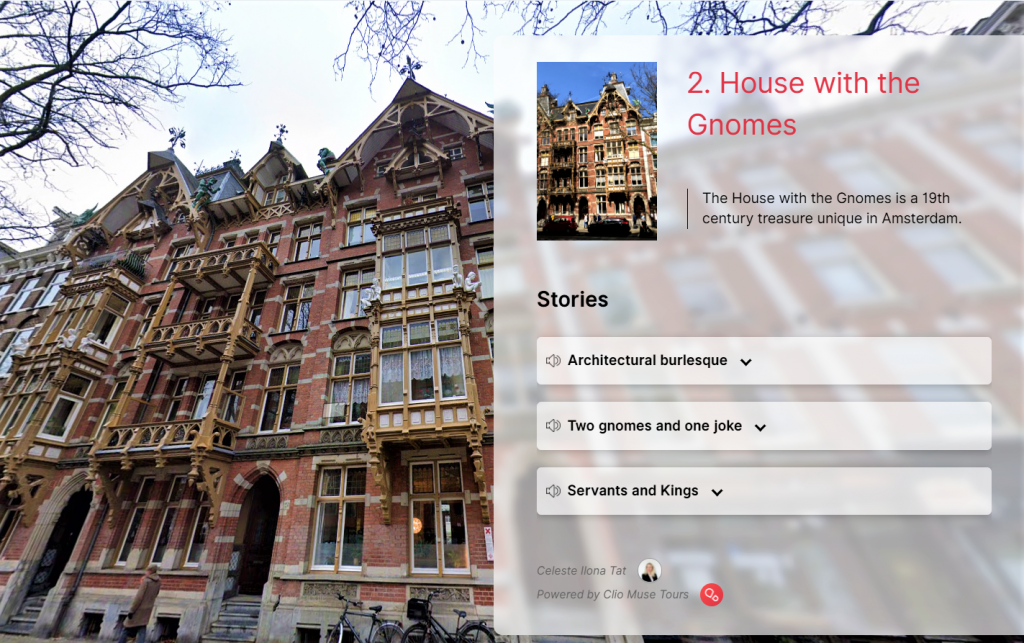
The historic Polderhuisje in the Pipe district
Between 1876 and 1895, the ‘Polderhuisje was a poor and noisy pad crammed with kids. In less than twenty years, more than fourteen families lived in the building. The poor Krook family must have had a hard time. Hendrik Krook, a garbage collector, and his wife Wilhelmina Makkinge had four daughters here who all died within a year. Regularly, there were more people living temporarily within the families; widows, and unmarried sisters; and also single workers. This gave the landlords of the polderhouse 314.60 guilders rent per year, which was a very satisfying income back in the days.
“I want to live like Common People” from “The Pipe District: Factories and the Rise of the Working Class” self-guided audio tour
The Spin House: a center of punishment and reform
The city was remarkably famous across Europe during the 17th and 18th centuries for its harbor, the Town Hall, the numerous music houses (speelhuis) and the Spin House (Spinhuis). The music houses were establishments where guests could eat, drink and dance in the accompaniment of live music. In reality, though, it was a place where clients and prostitutes could meet. Located just beyond De Wallen district, the Spin House was a center of punishment and reform. Women of all ages would end up here after committing any type of criminal activity. Sometimes, even members of the upper-class would be obliged to provisionally work here in case their behavior diverged from the social standards of the time. In the Spin House women were forced to knit and do wool work, while in the intervals they were made to read time and again excerpts from the Bible in order to be, ultimately, brought back to the right track.
“The principal curiosity” from the “De Wallen: The Red Light District” self-guided audio tour
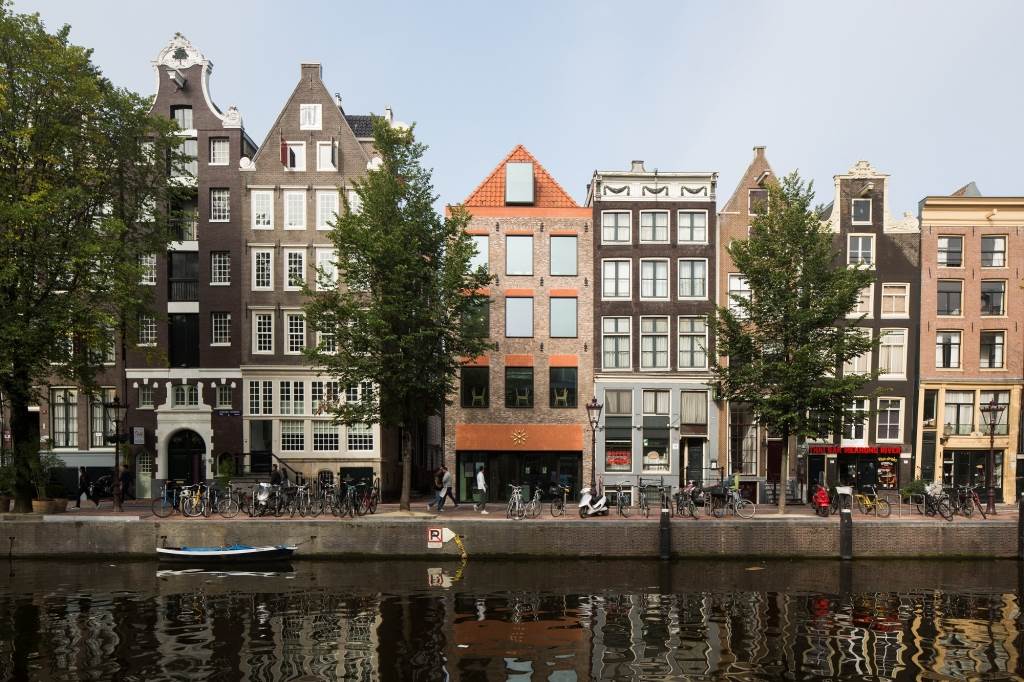
The Blue Bridge that inspired Rembrandt
During the time of Rembrandt, there was a wooden blue bridge at the place of today’s stone ‘Blue Bridge’ that was named after it. Rembrandt loved to come there, sit at the bridge and paint the view from it. We still have his drawing ‘The Amstel viewed from the Blue Bridge’ and you can see it at the Rembrandt House Museum. He painted the river, timber poles and the sailing boats on it. Once again, those drawings are a crucial source of information today. And we know a lot about how Amsterdam looked like in the 17th Century because of them.7 interesting things about Amsterdam
“Blauwbrug” from the “Following the footsteps of Rembrandt in Amsterdam” self-guided audio tour
-
Duration: 1h 30min
The “7 Interesting Things About Amsterdam Clio Muse Self-Guided Tours Narrate” article only introduces you to part of Amsterdam’s intriguing stories. Each one of the tours consists of around 10 stops and includes more than 40 stories. If you’re eager to learn more about the history and culture of Amsterdam, stay tuned because we will be releasing our brand new city walking tour soon. And this one takes you to the city’s scenic canals.



